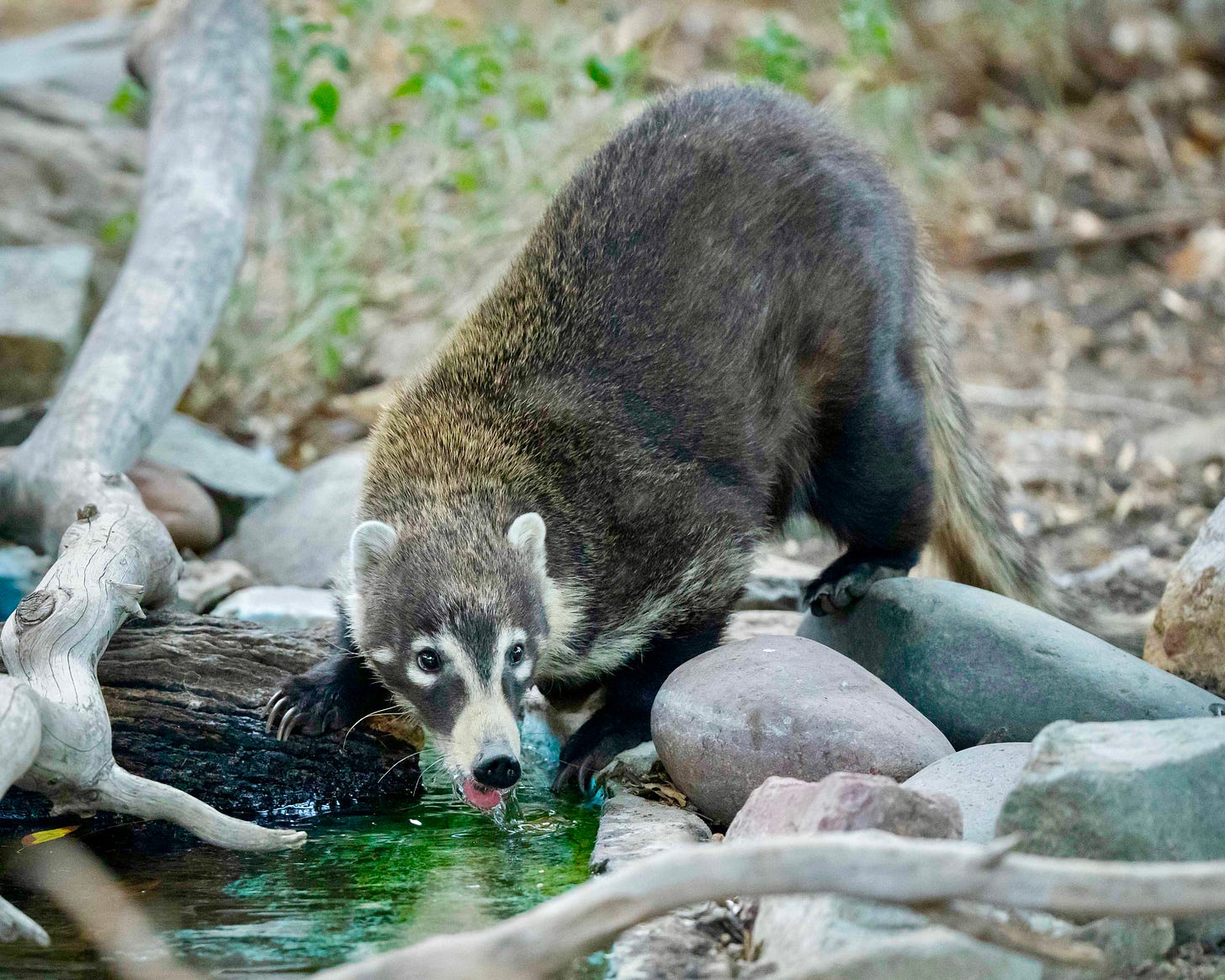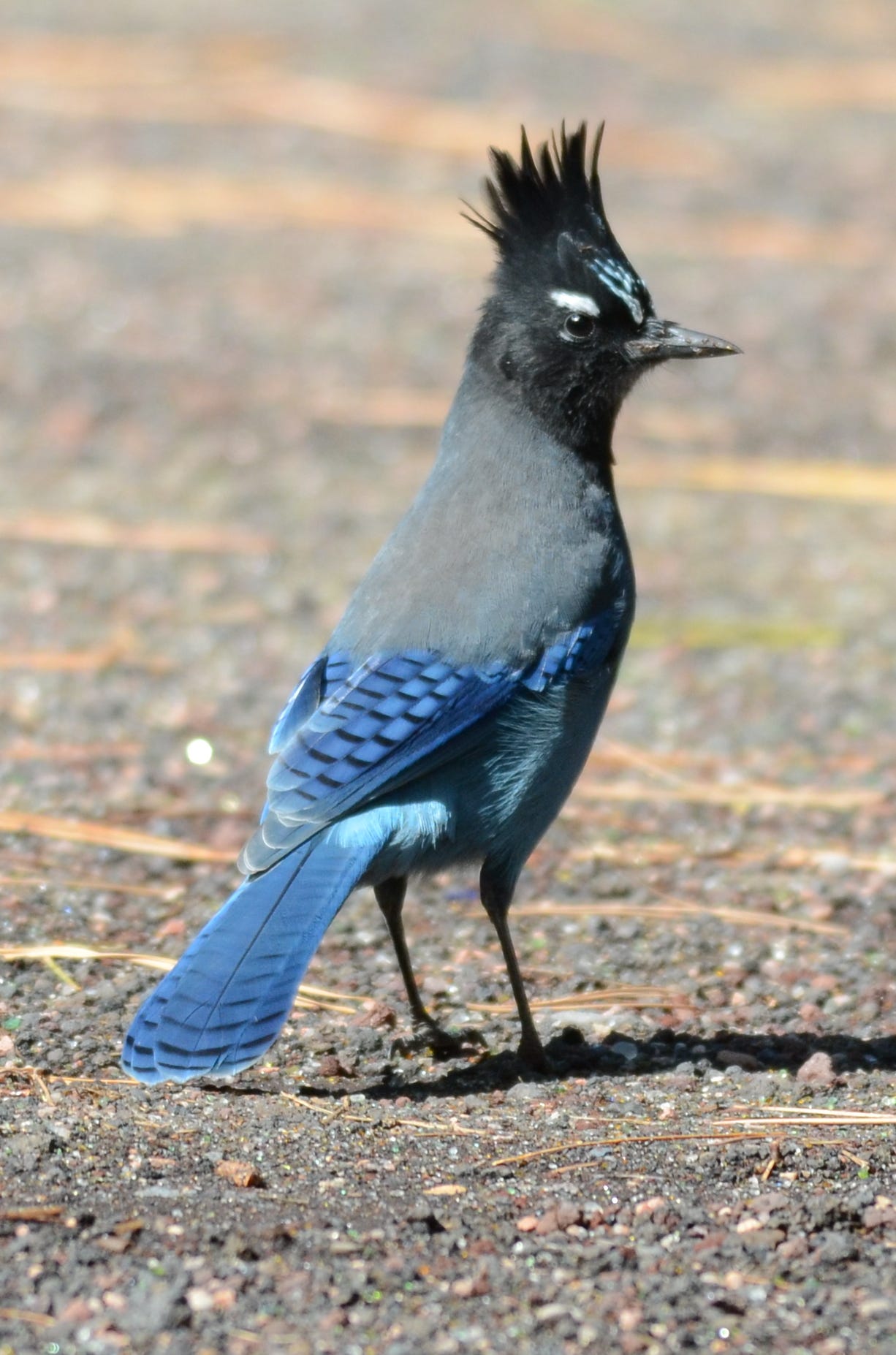PT 40 Where the Pine Bark Smells Like Butterscotch: Only in Payson, Arizona
Unpacking the unexpected charm, grit, and biodiversity of Arizona’s high-country escape. Where saguaros bow to pines, elk bugle like opera singers.
Here, in this dramatic transition zone where desert kisses forest, Mother Nature throws everything at the canvas: towering pines, butterscotch scented bark, prickly pears clinging to cliff sides, and wildlife that moves with either quiet mystery or loud attitude. It's stunning, it’s intense. Welcome to Rim Country’s wilder rhythms where the pines whisper, the bugs scuttle, and the elk make you pull over just to stare in awe.
Need to catch up?
PT 39 Bulls’ Testicles and My Love-Hate Affair with Payson’s Wild West
Or, Start from the beginning
What makes the Payson area truly special isn’t just its location beneath the Mogollon Rim (which is why locals proudly call it Rim Country) it’s that it sits in the transition zone between desert and forest. This unique ecological mash-up is one of the most biologically diverse regions in Arizona. It’s where the iconic saguaros surrender to pines, and where desert scrub gives way to dense forests, all thanks to the Rim’s dramatic uplift, which creates sweeping changes in elevation and climate. That shift blesses Payson with cooler temperatures, richer soil and a whole lot of pine trees.
The dominant pine species in the region create a rich and varied forest canopy. The Ponderosa pines are the showstoppers, straight, towering giants that stretch over 150 feet high. On warm days, if you lean in close, their bark gives off a scent that surprises most people. Some say it smells like butterscotch or vanilla. Not that I go around sniffing trees, but... when in Rome… don’t ask. Just sniff. And if the scent is elusive, a little scratch of the bark might bring it out.
In contrast, the Pinon pine is shorter and rounder that the mighty Ponderosa pine, but just as impressive in its own way. It produces edible pine nuts, which were once a vital staple for Indigenous peoples across the region. Then there’s the wonderfully rugged Alligator juniper, named for its cracked, scaly bark that looks like well, reptile skin. You can’t miss it. It’s distinctive, stubborn, and thrives in the drier, lower reaches of Rim Country, adding a scrappy, resilient presence to the forest mix.
Thanks to the dramatic elevation gradient around Payson, you can experience Sonoran Desert scrub, Chaparral, and Montane conifer forest all within a short drive which truly is a rare and ecologically rich transition zone.
Among the standout flora is Manzanita, with its twisting, smooth, reddish-brown bark that peels away in thin layers and evergreen leaves that shimmer with a silvery-gray hue. It’s one of the region’s most beautiful and iconic small trees, brilliant in all seasons. In spring, delicate edible flowers in shades from soft pink to vibrant red burst into bloom, creating a stunning contrast against the bark and foliage. By fall, those blossoms give way to small, sweet-tart fruits, resembling “little apples,” which is exactly how it got it’s Spanish name.
Manzanita has been a vital part of Native remedies and rituals for centuries. The tree represents strength, resilience, and adaptability. Its dense wood was used to craft tools and weapons, while its branches were burned in purification ceremonies. The bark, with its natural astringent properties, was used to clean wounds. The leaves were brewed into tea to soothe urinary tract infections, diarrhea, stomach aches, headaches, and even skin rashes. Some tribes chewed the leaves or created oral rinses to treat sore gums and throat infections. While the berries are a bit mealy and the seeds often spit out, they were sometimes eaten fresh or used to flavor beverages. With antimicrobial properties, Manzanita was also a go-to for oral health.
You’ll also find scrub oak and Gambel oak, hardy trees that splash the forest with golden hues in autumn and double as irresistible snacks for local deer. In spring and early summer, trails come alive with Indian paintbrush, lupine, Mexican gold poppies, and Penstemon, painting the forest floor with brilliant color in the spring, it is not to be missed. I remember the first time I witnessed Spring in the desert I have no idea there were so many natural flowers and blooming trees. It is such a treat!
Oddly, even cacti make an appearance in this highland mix. In the lower elevations near Rye and Tonto Basin, the prickly pear and cholla cactus cling to the landscape, where the desert refuses to fully let go. These resilient desert dwellers aren’t just sharp and stunning, they’re deeply rooted in Indigenous history. Prickly pear pads were eaten as a food staple and used medicinally to treat inflammation, wounds, and even blood sugar issues. The sweet fruit, called “tuna” (it doesn’t taste anything like tuna), was used in syrups, drinks, and as a natural dye. Prickly Cholla buds, harvested with care, were pit-roasted or sun-dried. They are still valued today for their high calcium content. Their spiny, skeletal beauty marks the threshold where desert and forest hold hands in silent unison.

The wildlife is a wee bit more intense up here than in Scottsdale. The wildest animal you’re likely to encounter is the occasional high-heeled shopper in full primal rage, elbowing her way to the Nordstrom Rack clearance rack. But up here? Rim Country is alive and not in a metaphorical way. It's pulsing with fur, feathers, hooves, and fangs. Yeah, real primal animals.
Roosevelt elk, larger than your average deer by a long shot, roam the woodlands in impressive numbers. They hop fences like ballet dancers with antlers, gallop over tundra and highways alike with a thunderous, muscular grace that’ll stop you mid-sentence and mid-road, if you’re lucky enough to see them. I have witness this awe. Loud, thunderous and yet graceful. Witnessing a bull elk crest upon a hill with the pines behind him? It's not just a sight, it’s a moment. You don’t just see it, you feel it, like the mountain exhaling. We were so honoured to witness this literal moment in time and question if it really happened.
If you’re visiting in the fall, you might hear the haunting bugle of rutting season echoing through the pines. Some describe it as a sharp, rising wail that’s part love song, part primal scream. Apparently eerie, but unforgettable.
And what would "up north" be without a black bear or two? They’re fairly common here, though generally reclusive. Still, they can’t resist the siren song of a trash can or a backyard apple tree. Bird feeders, peanut butter jars, and anything remotely snackable? All fair game. So, don’t leave your leftovers out and expect to have a quiet morning. Deposit all waste into proper trash receptacles. Well, “leave no trace” also includes taking the stuff out of your car and depositing in to the trash-proper! Don’t be that jerk!
Then there’s the elusive mountain lion, silently roaming the deeper woods. You’re unlikely to see one, and I am glad we did not. But you might feel the prickle of being watched while hiking a less-traveled trail. These cats don’t want to be seen. That’s what makes them all the more mysterious and majestic.
And of course, there are the javelina. Not pigs, although they don’t know that, these collared peccaries travel in snorting little bands like they own the place. They’re stubborn, near-sighted, and as desert lore goes, you’ll smell them before you see them. In the 15 years I lived in Arizona, I saw more fake javelina statues in gardens than an actual javelina. They remained as elusive to me as the desert tortoise. But when you do spot them, they’re oddly charming like, grumpy, bristled footballs with attitude, so I have been told.

Then there are the coatimundi, those long-tailed, raccoon-faced creatures that look like they belong in Costa Rica, not Arizona. But, they live here. Agile climbers, social by nature, and total fruit thieves. They move through the forest in bands, surprising the occasional hiker who thought Arizona’s wildlife maxed out at squirrels.
And speaking of surprises, this place is a birdwatcher’s dream. Thanks to the elevation shift, you’ll spot everything from red-tailed hawks silently circling overhead to the dapper and comical Steller’s jays squawking indignantly from the treetops. Add in nuthatches, owls, and spotting the rare bald eagle, and it’s basically a live episode of Wild Kingdom overhead at any given moment.
Just like down in the Valley, you’ll find your fair share of reptiles. Rattlesnakes do exist here, but so do their much friendlier cousins: gopher snakes, spiny lizards, and the adorable, unassuming horned toad. Fun fact, it’s actually a lizard, not a toad. They’re quirky, well-camouflaged, and look like tiny dinosaurs in a cati thorny body living their best life in the high desert sun. Together, they form a vibrant part of Payson’s ever-buzzing, ever-crawling, ever-watching ecosystem.

And speaking of ever-crawling there are bugs! But do we have to go there? Let’s just say that while the pines may whisper serenity, the ground below occasionally scuttles with enthusiasm. Between the ants, beetles, moths, and yes, the occasional spider with a flair for drama, it’s best to zip up your tent and shake out your boots. But really, unless you’re planning to host a bug documentary, it’s nothing a little peppermint and citronella spray and a good sense of humor can’t handle. Oh and scorpions? For the most part they are rare due to the elevation however, Shake those shoes!
So this is Mother Nature’s version of Payson, an expressive canvas of pine, stone, and silence. But what does it offer the curious, the weekend warrior, the vacationer, and the meandering nomad?
Oh there is ton to do, stay tuned.
If you have not subscribed yet, why not? If you are subscribed, you will be alerted as soon as the next story drops and it will come effortlessly into your inbox or an alert on the app every Wednesday morning. So, hit that blue button right there and subscribe now. Thank you!
Once you do that and are feeling all kinds of fuzzy feels, how about tipping the Tipsmobile? With your generous tip I can continue to fuel your imagination.
If my adventures and stories are bringing a smile to your face, why not throw a little fuel in my tank to keep the wheels turning —literally! Even creativity needs a top-up now and then! Your support keeps me inspired, and rolling down the road. Thanks for being part of the journey!
Need to catch up?
PT 39 Bulls’ Testicles and My Love-Hate Affair with Payson’s Wild West
Or, start from the beginning
Thank you for tuning in and reading this. I super appreciate you.
~Karen






Only you would take a photo of fly, only I would zoom in and double check what exactly it is🤣! Love you 🥰
I’ve seen several javelina recently in Tucson. Their snouts are so cute when they wiggle. Guess I’ll have to share the videos. Thanks for the reminder.